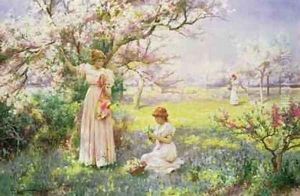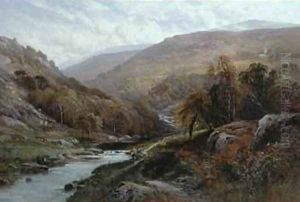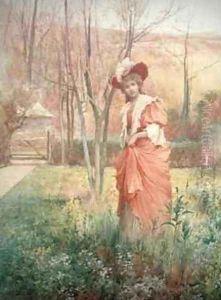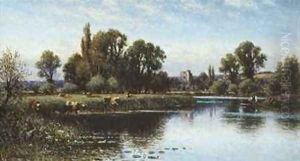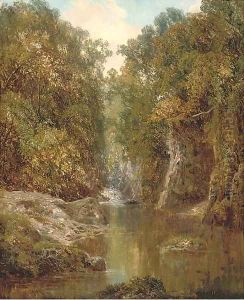Alfred Augustus I Glendenning Paintings
Alfred Augustus Glendenning, also known as Alfred Glendenning Sr. to distinguish him from his son who was also an artist, was a British landscape painter born in London in 1840. Glendenning's work is characterized by its romantic portrayal of the British countryside, often featuring lush greenery, tranquil waters, and pastoral scenes. He was particularly adept at capturing the changing effects of light and atmosphere, which added a sense of realism and mood to his paintings.
Glendenning's artistic journey began with an apprenticeship under a restorer of old paintings, which provided him with a solid foundation in the technical aspects of painting. This early exposure to the craft of painting and the study of older masterworks likely influenced his own style and preference for classical landscape themes. Despite this traditional approach, Glendenning managed to capture the essence of the Victorian era's appreciation for nature, which was a popular sentiment at the time.
Throughout his career, Glendenning exhibited at important British art institutions such as the Royal Academy, the British Institution, and the Royal Society of British Artists, among others. His works were well-received, and he gained a reputation as a skilled landscape artist. Glendenning's paintings were sought after by art collectors and the public, which allowed him to enjoy a successful career.
Glendenning's work is representative of the Victorian era's taste in art, with a focus on the beauty of the natural environment and a somewhat idealized view of rural life. His depictions of the English countryside, with their attention to detail and vibrant portrayal of natural beauty, continue to be appreciated by art lovers and collectors today. Alfred Augustus Glendenning passed away in 1910, leaving behind a legacy as a significant contributor to British landscape painting during the 19th century.
